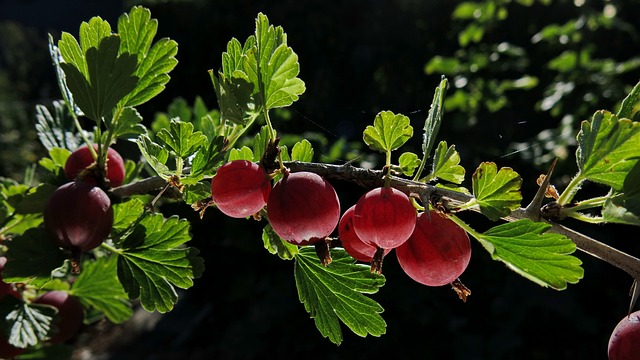Why are Gooseberries Illegal? Here’s What to Know

In the United States, gooseberries were once outlawed because they contributed to a tree-killing disease called “white pine blister rust,” decimating these trees. This fungus could have killed all of the pine trees in the U.S., so at the time, all Ribes were banned to protect the logging industry. White pine lumber-dependent economies like Maine were severely affected. For most of the 20th century, gooseberries were a “forbidden fruit.” In 1966, federal gooseberry restrictions were transferred to state-by-state jurisdiction, allowing gooseberry production in most countries.
Now, gooseberries are welcome in most states, but some, like Maine, still have rules. The economy of Maine depends on white pine, so the state government says that it is against the law to sell, transport, or have gooseberries or currants in most of the state.
Table of Contents
Legalities About Growing Gooseberries
In the early 1900s, currants and gooseberries were made illegal to stop the spread of white pine blister rust (Cronartium ribicola). This disease is caused by a fungus, affecting both Ribes and white pines. This is because the blister rust fungus needs toștiin proximity to both ofștiin orders to finish its life cycle.
Black currants (Ribes nigrum) and white pines (Pinus strobus) are very susceptible, while red currants and gooseberries have different levels of susceptibility.
Even though the federal ban was lifted in 1966, it is still illegal in some northern states to plant or grow black currants. But in 2003, New York State changed its ban by passing a law that made it legal for commercial growers and home gardeners to grow red currants, gooseberries, and immune or resistant cultivars of black currants all over the state.
Some hybrids of black currant, like the cultivars “Consort,” “Crusader,” and “Titania,” are resistant to the blister rust fungus. They can be planted where other currants and gooseberries are allowed.
Where in the U.S. Can You Buy Gooseberries?
Gooseberries may not be a well-known fruit, but you can buy them everywhere now. These berries can be purchased at stores like Trader Joe’s, Walmart, and Amazon. Indian grocery stores usually sell Indian gooseberries, called amla, in the frozen food or fruit and vegetable sections.
What is White Pine Blister Rust?
White pine blister rust is a severe disease that kills trees. It affects eastern white pine and other closely related trees (pines with needles in bundles of five). This disease is caused by Cronartium ribicola, not a native fungus. It was brought to North America in the early 1900s. This disease is now found in most places in the United States where pine trees grow, including Wisconsin. White pine blister rust can affect trees of any age, but it hurts seedlings and saplings the most.
The white pine blister rust fungus or Cronartium ribicola needs to live on two different plants for its complicated life cycle. The wind carries spores of the fungus that grow on white pine to other Ribes plants that serve as hosts (gooseberries and currants). After getting into gooseberry and currant bushes, the fungus grows quickly. It keeps making spores that germinate and cause more gooseberry and currant bushes to get sick. In late summer, the wind carries spores produced by gooseberries and currants to white pines, where they infect wet needles from rain, fog, or dew.
What Does White Pine Blister Rust Look Like?
When Cronartium ribicola gets into the needles, yellow to brown spots and bands, slowly, the fungus spreads through pine needles and bark to form cankers on tree twigs, branches, and trunks. A canker is a minor disease area surrounded by healthy tissue. It may be swollen or flat. A typical white pine blister rust canker has resinous edges and might look “blistered” before it breaks open to reveal Cronartium ribicola fruiting bodies with yellow to bright orange spores. As a canker grows and grows around a stem, it kills everything outside of the canker. A common sign of this disease is for dead white pine branches to keep their orange or red dead needles quickly, making a bright “flag.”
